#alligator river national wildlife refuge
Photo

[Image: Digital illustration of six red wolf pups, huddled together between clumps of tall grass. Low fog and a stand of pine trees can be seen in the background. End ID]
Good news!
Red wolf pups (Canis rufus) have been born in the wild for the first time in four years. The six pups were born in mid-April 2022 in Alligator River National Wildlife Refuge in North Carolina.
Red wolves are a separate species from the more well-known gray wolf (Canis lupus). They were declared extinct in the wild in 1980. Restoration attempts throughout the ensuing decades have been fraught. As of 2021 there were an estimated 15-17 in the wild (all in NC) and 241 captive wolves involved in the Species Survival Plan.
The odds may be stacked against the red wolf, but this litter brings a spark of hope all the same.
For the first time in 4 years, a litter of red wolf pups was born in the wild | NPR
New Year Brings Renewed Hope for America’s Red Wolf | FWS
The Collapse of Wild Red Wolves Is a Warning That Should Worry Us All | The Nation
Is the US Fish and Wildlife Service Slow-Walking Red Wolf Recovery? | Sierra Club
236 notes
·
View notes
Text

"Fisherman proudly shows off his catch." Cameron Prairie National Wildlife Refuge, LA, Records of the U.S. Fish and Wildlife Service, NARA ID 166709492.
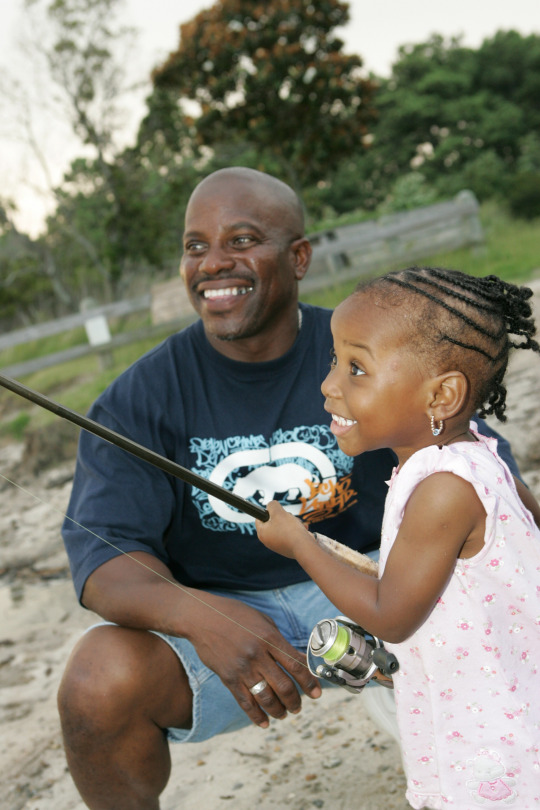
"Learning to fish," Alligator River National Wildlife Refuge, NC, undated. U.S. Fish and Wildlife Service, NARA ID 166710712
Calling all Anglers: FISHING SEASON!
By Miriam Kleiman, Public Affairs. Special shoutout to the team @Fletcher's Cove!
Is there a connection between Archives and fishing? YES! We hold millions of records from the U.S. Fish and Wildlife Service (USFWS, Record Group 22), dating back to 1868! Selected highlights below.
Stay tuned: learn about the agency's brilliant promotion of.... CARP! See the historic 1911 EAT THE CARP! poster imploring Americans to embrace, fish, eat, can, jelly and enjoy this then-new (to the US) fish!
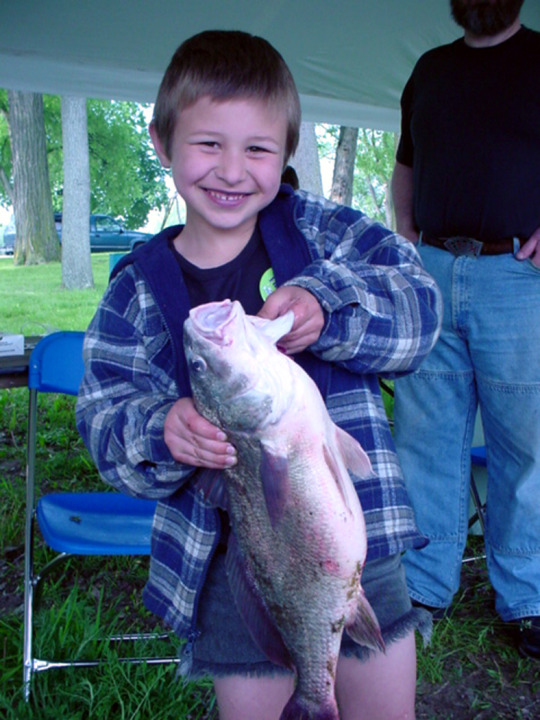
Kids' fishing day; Shiawassee National Wildlife Refuge, 6/8/2002, Saginaw, MI. U.S. Fish and Wildlife Service, NARA ID 166691838..
Cool off from the heatwave with ice fishing!
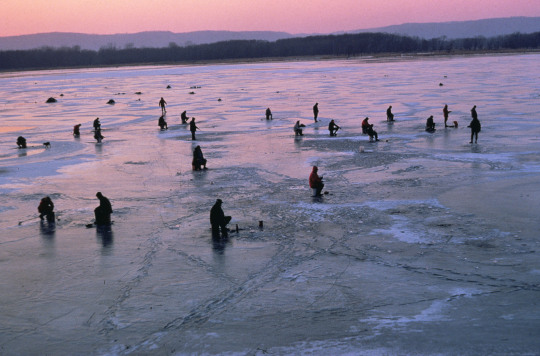
Ice Fishing, Stoddard, WI, undated, NARA ID 166692836.
Flashback: Halibut Fishing 1888!
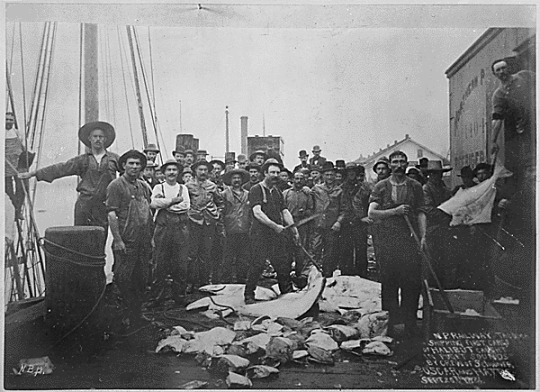
"N. P. Railway, Tacoma [Wash. Terr.] Shipping first cargo of halibut caught in Puget Sounds by crew of schooner Oscar and Hattie. 9/20/1888." By N. B. Miller. Records of the U.S. Fish and Wildlife Service, NARA ID 513088.
USFWS: Why can't fish just get along?

FILM: Cooperative Fish Culture, 1927. Shows work at fish hatcheries operated by the Bureau of Fisheries
More online!
“A Carpapalooza: An American Anthem”, Pieces of History
Learn about the dangers of illegal muskrat trapping!
Fur Warden Sketches Map of Fortymile River Basin in Alaska, The Text Message.
National Park Service Virtual Tour, National Archives Catalog newsletter.
#usfws#fish and wildlife#nature#environment#fishing#deep sea fish#deep sea exploration#deep sea creatures#deep sea life#yosemite#national parks#fishing life#catch and release#carpfishing#angler#wildlife photography#lures#fishing trip#department of the interior#usinterior
46 notes
·
View notes
Text


Who knew that a few wrong turns could lead to such a beautiful destination?
📍 Alligator River National Wildlife Refuge
#nature photography#nature landscape#landscape photography#landscape wallpaper#flowing#flowing water#river#beauty of nature#wandercore#wanderlust#grassland#swamp#boardwalk#woods#forest#beach#wildlife#wildlife refuge#nature preserve#trees#canon eos 2000d#canon photography#park
14 notes
·
View notes
Text
Red wolves were successfully reintroduced at the Alligator River National Wildlife Refuge in North Carolina!!!
0 notes
Text
1 note
·
View note
Text

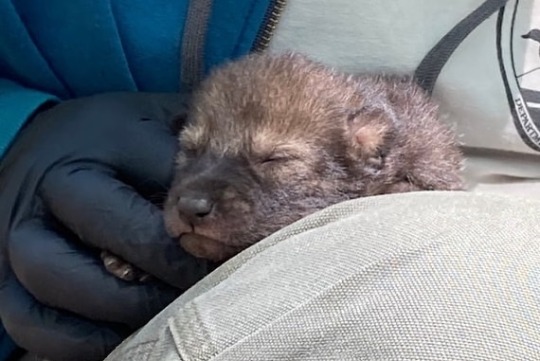


And now for some really good news 😀
Six critically endangered red wolves were introduced into the Alligator River National Wildlife Refuge in coastal North Carolina.
But unlike other wolves, no one brought these new canines to the Outer Banks area as part of a federal program to recover a dying species. For the first time in four years, these red wolves were born there. #endangered #rare #red #wolves
Source | Washington Post
0 notes
Photo

Suns out, tongues out!
It's the weekend, time to go bear-zerk! With a little patience and luck, visitors to Alligator River National Wildlife Refuge may see black bears like this cub in North Carolina. Alligator River has what is believed to be the highest concentration of black bear in the southeastern United States. As National Wildlife Refuge Week (October 13-19) ends, our celebration and appreciation of the lands and waters of the do not. We'll keep sharing the wonder of these incredible places from the National Wildlife Refuge System all year long. Photo courtesy of Cass Girvin.
#usinterior#nature#wildlife#animal babies#national wildlife refuge#alligator river national wildlife refuge#north carolina#outerbanks#national wildlife refuge week#animals#tongues out#usfws#us fish and wildlife service#travel#wildlife watching#bears#bear cubs#black bear
761 notes
·
View notes
Photo

About 35 endangered red wolves live in North Carolina's Alligator River National Wildlife Refuge. There, they enjoy protections from hunting that may be stripped everywhere else in the United States.
(Photo: Steve Hillebrand/U.S. Fish and Wildlife Service)
#steve hillegrand#photographer#us fish and wildlife service#red wolf#wolf#north carolina#alligator river national wildlife refuge#endangered#wildlife#united states#nature
15 notes
·
View notes
Text
Six endangered red wolves born in North Carolina refuge
Six endangered red wolves born in North Carolina refuge
Good News Notes:
“Six critically endangered red wolves were introduced into the Alligator River National Wildlife Refuge in coastal North Carolina.
But unlike other wolves, no one brought these new canines to the Outer Banks area as part of a federal program to recover a dying species. For the first time in four years, these red wolves were born there.
The discovery of the litter tightly…

View On WordPress
#Alligator River National Wildlife Refuge#attacks on livestock#born there#cause for joy and celebration#coastal North Carolina#congressional mandate#conservation groups#coyotes#critically endangered#earthen den#establishing their territory#Facebook post#federal program#good news#government-sanctioned hunting#happy#help#hunting prowess#Interior Department#Jimmy Carter administration#joy#kindness#mating#nearly extinct#need#positive#protect red wolves#recover a dying species#Red Wolf Recovery Program#red wolf rescue program
1 note
·
View note
Link
On March 14, 1984, the Alligator River National Wildlife Refuge was established on mainland Dare and Hyde counties to protect and preserve the forested wetland habitat called “pocosin” and its associated wildlife species.
In the late 1970s, biologists were growing concerned by the rapid loss of wetlands in eastern North Carolina as pocosins were drained and old-growth cypress and Atlantic white cedar trees were destroyed for logging and farming operations. Several conservation organizations and state and federal agencies worked together to preserve these fragile wetlands.
The Prudential Life Insurance Company donated the refuge’s first 118,000 acres, and congressional appropriations eventually allowed it to expand to the more than 150,000 acres it covers today. The preserved area is bordered by the Alligator River and Intracoastal Waterway; Albemarle Sound; Croatan and Pamlico sounds; and the Long Shoal River and corporate farmlands.
In 1986, the U.S. Fish and Wildlife Service initiated the Red Wolf Recovery Program to reestablish the endangered red wolf population in the wild. Today, about 100 red wolves roam the refuge. It is also an important habitat for black bear, American alligators, river otters and the endangered red-cockaded woodpecker. Two hundred species of birds have been recorded in the refuge.
The Fish and Wildlife Service has also launched a number of projects designed to restore habitat and monitor wildlife populations, including restoring historic water levels, banding wood ducks on the refuge and replanting Atlantic white cedars.
The refuge is open to the public year-round for hiking, kayaking, photography, birding, fishing and hunting in season.
Visit: Accessible throughout Dare and Hyde Counties, the Alligator River National Wildlife Refuge‘s visitor center in Manteo is great place to discover all there is explore.
This Day in NC History: Wetland Refuge Established
#NC#History#Alligator River National Wildlife Refuge#Wildlife Refuges#wetland#conservation#NC History#This Day in NC History
0 notes
Text
U.S. Fish and Wildlife staff in North Carolina welcomed a litter of six red wolf pups into the world earlier this week. It's the first time in four years that a pair of wild red wolves — a species teetering on the brink of extinction — gave birth to a litter in the wild.
The newborn pups, four females and two males, were found in the Alligator River National Wildlife Refuge along the coast of northeastern North Carolina. Staff at the Red Wolf Recovery Program announced the paw-sitive news on Facebook Thursday.
"This new litter is the first wild-born litter of red wolves since 2018. This red wolf pair was formed through the combination of several management actions and the two red wolves subsequently following their natural instincts in pairing, establishing their territory and mating," the post read. "Every generation yields a new born hope for the red wolf...a cause for joy and celebration!"
Before settlers arrived in North America, red wolves thrived throughout the Southeast U.S, from Florida to the Great Plains and the Ohio River Valley, according to national conservation organization Defenders of Wildlife. But through hunting, extermination and the expansion of cities and towns, humans drove the species to near extinction.
There were a mere 17 wolves left to save when the Endangered Species Act passed in 1973. Before 14 of the remaining 17 wolves were trapped and transferred into captivity, the handful of survivors lived across a small area of the Louisiana and Texas coast.
The remaining wolves disappeared, Fish and Wildlife said, attributed to continued human persecution and a loss of habitat. The red wolf was declared extinct in the wild in 1980.
See link to continue reading!
2K notes
·
View notes
Text
The U.S. Fish and Wildlife Service (USFWS) is preparing to release nine endangered red wolves to a conservation area west of the Outer Banks in North Carolina.
The red wolf, endemic to the United States and considered the most endangered wolf in the world, once called the entire Southeastern U.S. home before habitat destruction and overhunting nearly killed off the species. Red wolves were listed as endangered in 1973 under the Endangered Species Act.
Now, the USFWS is working to transfer and release nine of the wolves to a conservation area that includes the Alligator River and Pocosin Lakes National Wildlife Refuges. The nine red wolves consist of a family and two additional breeding pairs that conservationists hope will result in breeding to help rebound the population of the species in the wild.
123 notes
·
View notes
Text


Red wolves were essentially extinct in the wild until a federal program began releasing a couple of captive wolves each year in eastern North Carolina more than three decades ago. The wild population grew to more than 100, and they were having pups on their own.
In 2015, the U.S. Fish and Wildlife Service stopped releasing the endangered wolves around the Alligator River National Wildlife Refuge.
People in the area were allowed to hunt the red wolves.
The population crashed. Now there are seven known red wolves left in the wild, all in eastern North Carolina. There could be up to another dozen red wolves in the area that are not being tracked by conservationists. [...]
A federal judge in Raleigh just ordered the Fish and Wildlife Service to begin releasing wolves from captive breeding programs back into the wild. The FWS has until March 1 [2021] to come up with a new plan to begin releasing wolves again in eastern North Carolina.
Red wolves are smaller than their more well-known cousins the grey wolves. They once roamed up and down the east coast and as far west as Texas. But hunting and habitat loss almost killed off the species. By the 1980s, the only red wolves left were in captivity.
The program to reintroduce red wolves in eastern North Carolina started in 1987. The wild population peaked at 130 in 2012. But three years later, FWS stopped releasing more wolves in the area and allowed people to hunt the wolves that were still there. [...]
Since 2015, conservationists have sued the federal government several times to stop the hunting of the wolves and get the program back on track. [...] Judge [TB] granted the preliminary injunction to restart the program on January 21 [2021].
-------
Headline, image, caption, and text published by: Charles Duncan. “There Are Only Seven Known Red Wolves Left in the Wild. That’s About to Change in North Carolina.” Spectrum News. 26 January 2021.
From elsewhere:

653 notes
·
View notes
Note
I’m moving to Florida later this year (unfortunately) do you have any stories or favorite places in Florida?
Sure, I have Florida recommendations! My partner has a lot of family there and has always hated visiting and then said after spending two weeks there with me, “Wow, I had no idea Florida could actually be fun!”
-First and foremost, I simply have to start with the Everglades, one of my favorite National Parks in the country! There’s so much to do, but I highly recommend the tram tour at Shark Valley, and any way you can get out on a boat from Flamingo Marina—I personally love renting canoes and paddling along the edge of the mangroves. It’s a really good way to get away from the mosquitoes too!
-Any night airboat or kayak tour where you can see gators’ eyeshine in the dark. It’s one of my favorite aesthetics.
-There are a ton of little food stands and trucks in western Miami (I don’t know what this region is called). Taqueria 5 Hermanos Food Truck is my favorite I’ve ever been to!
-Near the Everglades, there’s the Swamp Ape Research Headquarters, which is a very fun little stop for any cryptid lovers.
-Corkscrew Swamp near Naples has an absolutely gorgeous boardwalk where you can see Ghost Orchids, Alligators, Barred Owls, and a ton more!
-In the winter, the number of manatees hanging out around Crystal River is absolutely staggering. If you get the chance, you should absolutely hop in the water with them on a snorkelling tour, but be sure to keep your distance and respect their space!
-All of the Keys are great, but in particular the Dry Tortugas National Park (for snorkelling!), the Key West Botanical Gardens, the Audubon House and Gardens, and the National Key Deer Refuge.
-The Arthur R. Marshall Loxahatchee National Wildlife Refuge is a great little walk in the Boca Raton area with a ton of cool wildlife.
-Okaloacoochee Slough State Forest is a great place for camping and fishing, if that’s your thing!
-Sanibel Island for beach-combing but get there early. I have no idea why no else one ever gets up early to beat crowds, but it is a near-universal that anywhere unpleasantly crowded is nice and quiet and peaceful at 6 am.
53 notes
·
View notes
Photo
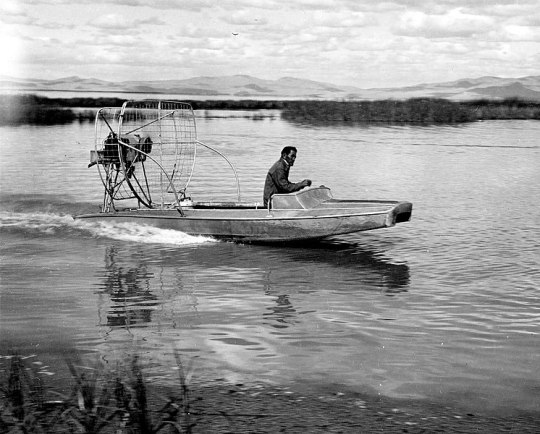
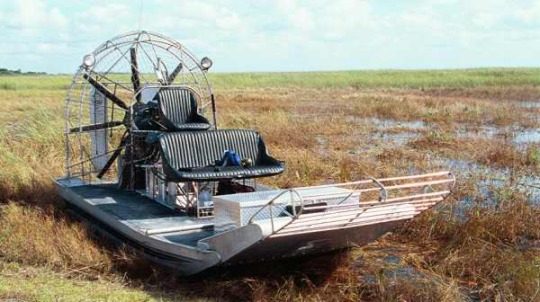

Airboats: Using aircraft engines to speed across water, ice and marshes
Unlike the attempts to retrofit aircraft engines with propellers onto railway cars, such as the Aerowagon or the Dringos car, which never managed to catch on due to a variety of issues, boats with aircraft propeller engines had more success. They are called airboats, but are also known as fan boats or swamp boats, and can reach speeds of up to 135 mph (217 km/h).
Models with aircraft engines on top of a normally flat bottom made of wood, aluminium or fiberglass are still commonly used today for transport on shallow waters, marshlands, swamps and even ice, anywhere where a submerged propeller as is otherwise common on motorboats would be a problem. In these areas they are important for subsistence hunting and fishing, rescue operations, tourism, and to help with conservation in e.g. bird refuges.
The first recorded airboat-like vehicle, named “Ugly Duckling” was a catamaran built and tested by Alexander Graham Bell and Cyrus Bell in 1905 in Nova Scotia, reaching however only speeds of 4 mph (6.4 km/h). Further airboats were invented in Brazil and France in 1907, were they were known as hydrofoil and hydroglisseur. In the 1920s and 1930s Airboats started becoming more common in regions like Florida and Louisiana.
However, the first predecessor of most of the airboats built and in use today was built near the Bear River refuge in Utah in 1943 by Leo Young, G. Hortin Jensen and Cecil Williams. It was later called Alligator I and constructed to help biologists travel across mud, wetlands and shallow water of the world’s largest migratory wildfowl refuge faster, which previously had to be waded through or slowly traversed on boats with flat-bottoms. Jensen and Williams later started an airboat business that supplied customers around the world.
Read more:
Fred Poyner IV: Airboats. Remote Access Watercraft (The Filson Journal, April 29, 2021)
Ray Grass: World's first airboat hatched at Bear River refuge in '40s (Deseret News, March 8 2007)
Valerie Mellema: Air Boats and Fan Boats Guide (Boattrader.com)
Robert Dummet: Rescue on the Chattahoochee (FireEngineering.com, 1 January 2006)
Alexander Graham Bell, Cyrus Adler: Aërial Locomotion. With a Few Notes of Progress in the Construction of an Aërodrome (1907)
Image sources:
Topmost image: G. Hortin Jensen of the U.S. Fish and Wildlife Service, Public Domain, via Wikimedia Commons
Second image from top: United States Geological Survey South Florida, Public Domain, via Wikimedia Commons
Bottommost image: Dr. Alexander Graham Bell and Cyrus Adler, Public Domain, National Geographic January 1907 via Wikimedia Commons
2 notes
·
View notes
Text
Aransas Wildlife Refuge – Winter Home of the Whooping Crane
New Post has been published on https://walrusvideo.com/aransas-wildlife-refuge-winter-home-of-the-whooping-crane/
Aransas Wildlife Refuge – Winter Home of the Whooping Crane
Aransas Wildlife Refuge is famous for being the winter home of the Whooping Crane. Aransas County, Texas is one of the hottest birding spots in the country. In fact, USA Today readers recently choice named Aransas National Wildlife Refuge as the number one birding spot in the nation. There you can see 400 different species of birds. Aransas County has long been on the great texas coastal birding trail because of its position on the central flyway path for migratory birds.
On This Page
ANWR What it is, and Where
National Wildlife Refuge System
U.S. Fish & Wildlife Service
Aransas National Wildlife Refuge
Best trails in Aransas National Wildlife Refuge, Texas
Aransas Wildlife Refuge Check List
How often do you visit the ANW Refuge?
ANW Refuge Austwell
Aransas National Wildlife Refuge Whooping Crane Survey
Aransas Wildlife Refuge (ANWR)
Texas is home to the Aransas Wildlife Refuge (ANWR). This refuge is known for helping to save the whooping crane from extinction. In 1941 there were only 15 whooping cranes left, this refuge was established previously to help to breed them and took the responsibility to save the whooping crane. The refuge offers many activities for visitors. There are many different nature trails and observation places to enjoy the wildlife from.
Tourists flock to the Aransas Wildlife Refuge Austwell during the winter to catch a glimpse of the whooping cranes. This year was special as a nesting pair of bald eagles was also drawing bird lovers in. About halfway down the refuge’s one-way, 9-mile driving loop visitors stop or pull their cars over to watch the iconic birds nesting in the distance.
National Wildlife Refuge System
Aransas Wildlife Refuge, coastal habitat conservation area in Southern Texas, U.S., located about 50 miles (80 km) northeast of Corpus Christi. The refuge, parts of which are jointly administered by state and federal agencies, covers a total of 181 square miles (469 square km) on the Gulf of Mexico , including large tracts of land on Matagorda Island and on a broad peninsula between San Antonio Bay and St. Austwell.
The refuge was established in 1937 to serve as “a refuge and breeding ground for migratory birds and other wildlife…” and “…for use as an inviolate sanctuary, or for any other management purpose, for migratory birds…” The wildlife conservation mission of the national wildlife refuge system and the U.S. Fish and Wildlife Service ensures the refuge will continue to conserve, protect and enhance these lands for the benefit of wildlife and the American people.
In 1937 a large effort was needed to protect dwindling populations of migratory birds and other wildlife in the region. Set aside by the executive order of President Franklin D. Roosevelt, this unique gulf coast landscape has remained largely natural. It has been able to continue its ongoing legacy of constant and dramatic transformation That’s a process that began when it was first formed roughly 120,000 years ago.
Aransas is considered the “crown jewel” of the national wildlife refuge system. It is the only summering ground for the endangered whooping crane and home to large colonies of birds including pelicans, cranes, herons and egrets. The refuge has a number of small walking trails and also has a scenic 10 mi (16 km) drive through its interior. Wild boar, alligators and armadillos can also be seen at the refuge.
Current weather conditions for Aransas National Wildlife Refuge, Tx, are obtained from the closest government-operated station. That is a personal station contributing to the PWSweather. Com network which may have varying degrees of accuracy Or the forecast may be obtained from the Meteorological Assimilation Data Ingest System (MADIS).
The nearest weather station for both precipitation and temperature measurements is Aransas Wildlife which is approximately 8 miles away and has an elevation of 15 feet (2 feet higher than the refuge trail system).
This refuge is one of over 545 national wildlife refuges spanning the united states and managed by the US Fish and Wildlife Service. The national wildlife refuge system is the only national system of lands dedicated to conserving our wildlife heritage for today and generations yet to come. The Aransas refuge is comprised of over 115,000 acres including the Blackjack Peninsula, Matagorda Island, Myrtle Foester Whitmire, Tatton and Lamar units.
This reserve is a large contiguous complex of wetland, terrestrial, and marine environments named for the two river systems that flow into it. Coastal prairie, oak motte, riparian freshwater, and salt marsh habitats, make up the reserve. The water portion consists of three large, open and shallow bays that support extensive tidal flats, seagrass beds, mangroves, and oyster reefs. The largest wetland habitat (24,400 acres) on the north side of the reserve is part of the refuge and is the winter home to the critically endangered whooping crane.
Just one of five hundred and more national wildlife refuges spanning the US, theses are a national system of lands. Lands that are dedicated to conserving US wildlife heritage not only today but for many generations into the future.
The wildlife refuge is partnering with Texas Parks and Wildlife Department (TPWD) to offer hunters the convenience of applying for refuge hunt permits online. Hunters are now able to apply for the refuge’s white-tailed deer and feral hog hunting permits through the texas parks and wildlife department’s online public hunt draw system.
Slowly rebounding from near extinction, this bird’s survival depends on a healthy gulf.
In the classic fine photo of the refuge a whooping crane typically stretches skyward. It remains a vital refuge for at-risk birds. Resilient whooping cranes have been slowly rebounding from near extinction during the past century, but their survival still depends on a delicate coastal ecosystem.
The friends of the U.S. Fish & Wildlife Service
The friends of Aransas National Wildlife was founded in October of 1997. They care about the refuge and want to help the US Fish and Wildlife Service with their mission of protecting wildlife and wildlife habitat. With 501 (c) (3) not for profit status, they have grown to approximately 100 members.
It is one of the most popular birding areas in Texas, famous as the best site in the world for the largest wild flock of the endangered whooping crane. In addition, a large number of other birds can be seen there. More than 392 species have been recorded in total, one of the longest bird lists from any of the USA’s network of wildlife refuges.
A park entrance fee is charged per day — $3 per person or $5 per vehicle. Note: various passes are available that permit free access to all national wildlife refuges. For more information, refer to the U. S. Fish & Wildlife Service Refuge Passes Dept.
The texas coastal bend has long been a region that whooping cranes migrated to for the winter. This coastal bend includes the deep curved area located along the gulf. One of its largest cities includes Corpus Christi, and other areas include Laguna Madre, North Padre Island, and Mustang Island. In the last few years, a record number of cranes have touched down along the Texas coast.
A recent visitor to the refuge peered through a scope atop an observation deck. She had never seen a whooping crane, and a pair of them towered over other birds foraging on the flats in the distance. “This is a place worth saving,” she said. The U.S. Fish and Wildlife Service recently announced it would spend $26. 9 million making whole again a national wildlife refuge carved up by hurricane Harvey.
Aransas Wildlife Volunteers
I want to take a minute to recognize a few long-time volunteers at Aransas Wildlife Refuge that really do make a difference for our wildlife and wild places. First off, a long-time volunteer at Aransas was awarded as the 2017 Coastal Steward by the coastal bend bays foundation at the Annual Environmental Awards Banquet on 7 December. That guy put a great deal of “sweat equity” into Aransas over the years, from mowing, cutting and spraying invasive species to helping our maintenance staff with all sorts of projects.
Aransas national wildlife refuge is a 115,324-acre (466. 7km2) protected area situated on the southwest side of San Antonio bay along the gulf coast of the U.S. State of Texas. It is located in parts of Aransas, Refugio, and Calhoun counties. It is situated on the southwest side of San Antonio Bay, formed by the mouth of the Guadalupe River. It also includes nearly the entirety of Matagorda Island, a 38-mile barrier island.
Don’t miss out on the opportunity to see the endangered whooping cranes. We offer the chance to witness these birds in their natural habitat! These are winter and springtime trips to the Aransas refuge. The lowest impact way to see these birds is from the water looking onto the refuge, and there is no better way to see them than in the comfort of the wharf cat and scat cat.
Aransas National Wildlife Refuge was originally known as Aransas Migratory Waterfowl Refuge It is located on the Blackjack Peninsula, eight miles southeast of Austwell and midway between Rockport and Port Lavaca, on the gulf coast. The refuge comprises 54,829 acres of scattered blackjack oak woodlands, fresh and saltwater marshes, ponds, and coastal grasslands on the mainland, as well as 56,668 acres on Matagorda island. Karankawa, Lipan, Tonkawa, and Comanche Indians once occupied the area.
Friends of the refuge recently gave out 500 shells they had painted, as well as roseate spoonbill postcards and Aransas NWR pencils, and information about the refuge. One member created a photo album that she had on display at the table, and that got a lot of interest.
The refuge will resume collecting fees to access the refuge beginning on Friday, March 5, 2021. Fees are used to support and enhance visitor facilities, infrastructure (trails and structures), and public programs. The contact station and restrooms will remain closed (portable restrooms are available). All visitors will need to register and pay the daily access fee (cash only) at the information kiosk/iron ranger.
There was plenty of outdoor fun to be had last autumn at the Aransas Wildlife Refuge in Austwell. Activities included archery and BB gun shooting, kids’ fishing, cast netting lessons, crafts, kayaking, junior wildland firefighter events, face painting, casting and fly fishing practice, wildlife games and more.
The bugle of the endangered whooping crane echoes across the far reaches of the marsh. Only at Aransas refuge do North America’s tallest birds find an enduring winter stronghold. Here, too, pelicans, herons, egrets, roseate spoonbills, ducks, and geese dine, in brackish waters and salt marshes teeming with fishes, blue crabs, and clams. Onshore, javelinas, bobcats and deer wander oak woodlands.
The Trails in Aransas National Wildlife Refuge, Texas
The refuge is open daily and features a driving trail, walking trails, observation tower, and picnic area. It’s a short drive from Port Aransas and the Aransas Wildlife Refuge is well worth it. You can get up close and personal with whooping cranes and alligators. The time we went there with our dog, they told us to leave the dog in the car because it will look like dinner to the alligators! Additional activities include hiking, birding, picnicking, and fishing. Six leisurely hiking trails totalling 4.
Aransas national wildlife refuge is a 114,657 acre (464 km2) protected area situated on the southwest side of San Antonio bay along the gulf coast of the U.S. State of Texas. It is located in parts of Aransas, Refugio, and Calhoun counties.
My husband and I have been to that refuge several times over the past 20 years. It is a huge refuge at 115,324 acres. We spent about 4 hours at the refuge on this visit. We found 7 alligators on the rail trail ( 0. 3 miles) and heron trail ( 1. 4 miles ). Part of the heron trail was closed due to a damaged footbridge. We had gone to the wildlife refuge in the spring for the first time to photograph the whooping cranes at the refuge. However, the morning of our trip was so foggy all of the photos were pretty disappointing. At that time we decided we had to go back in November and indeed we did return. We found out about Kevin Sim’s charter boats, Aransas Bay Birding Charters, and booked a trip on the jack flash.
Barn owls are still quite common in the refuge, and I took a wonderful photo of a fox squirrel standing on top knotted bark of a tree. Another great shot was of an alligator hiding in the brush. So for my money, Aransas County, Texas is indeed one of the hottest birding spots in the country.
Aransas refuge is displayed on the “Mesquite Bay” USGS quadrangle of their topo map. Anyone who is interested in visiting Aransas National Wildlife Refuge can print the free topographic map and other maps using the link above. The location, topography, and nearby roads and trails around the refuge (park) can be seen in the map layers.
Texas Parks and Wildlife Department (TPWD) offers a variety of draw hunts. I usually put my name in the hat for a couple of them every year, but I never had any luck getting drawn. That all changed this past December when I received an email from TPWD informing me that I had been drawn for a hunt in the Aransas Wildlife Refuge. The quarry was whitetail deer and feral pigs.
Wildlife Refuge Check List
You have a vacation wish list a mile long, but there’s one spot that needs to be checked off now. You’re not about to be the only person who hasn’t seen that national wildlife refuge, so it’s high time you see it your way. We found an absurdly cheap deal on a hotel near the refuge. What’s a vacation anyway if you can’t treat yourself?
For bird-watchers, the 115,000-acre ANWR is the premier site on the Texas coast, with more than 400 species having been documented here. Even people who don’t carry binoculars and ornithological checklists can get caught up in the bird-spotting frenzy. It peaks here every March and November but is still great throughout the year. None are more famous, more followed or more watched than the whooping-cranes – among the rarest creatures in North America.
Situated on the Texas Gulf Coast along San Antonio Bay, the 70,504 acres of the ANWR are host to an exotic array of wildlife, including alligators, javelina (collared peccary), snakes, bobcats and whooping cranes. A 16-mile one-way driving tour takes visitors through the refuge’s grassland, oak thicket, freshwater pond, and marshland habitats, providing excellent wildlife viewing opportunities.
How often do you visit the Aransas Wildlife Refuge?
Bird watching enthusiasts will want to take a short 45-minute drive to the refuge located on the San Antonio Bay near Austwell. This remarkable place is home each season to thousands of migratory birds including pelicans, herons, egrets, spoonbills, shorebirds, ducks, and geese.
The white prickly poppies are in full bloom in early May. Against a clear blue sky, the temperature is rising, but the spring flowers bring relief, at least in a visual sense. This was my first visit to this particular refuge, yet it feels familiar. In my experience, the refuges share a stillness that sets them apart from the world we come from.
All the information you need to know about ANWR Airport is available online. While vacationing in Rockport, Texas, we visited the ANWR and Mustang Island State Park. They were both about a 30-minute scenic drive from our spot at Bay View RV Park. We took many pictures, shot a few videos, and got sweaty in the hot and humid Southern Texas weather.
Aransas Rail Trail in the Wildlife Refuge Austwell
Aransas national wildlife refuge rail trail is a 1. 2 miles moderately trafficked out and back trail located near Austwell, Texas that features a lake and is good for all skill levels. The trail is primarily used for walking, nature trips, and bird watching and is accessible year-round. Dogs are also able to use this trail but must be kept on a leash.
The youth conservation corps workers spent 8 weeks working in different areas of the Aransas National Wildlife Refuge. The students spent one day working in the pollinator garden. They did an amazing job and accomplished more in one day than we ever imagined possible.
Refuge Whooping Crane Survey
The refuge begins posting updates once the birds begin arriving (around mid-October) and posts information frequently until the birds leave for their summer home in Canada (near the end of March). Once the birds have left their wintering grounds and the data has been fully analyzed, the refuge prepares the Aransas-wood buffalo whooping crane abundance survey, a full report on the season. This information will also be made available to the public.
The ANWR completed the annual whooping crane abundance survey 2021 in the last week of February and were able to fly three primary surveys and two secondary surveys. Areas surveyed stretch along the Texas coast from Matagorda to Port Aransas. The pilot with the USFWS migratory birds program, flew the survey crew in a wheeled Kodiak again this year. In addition to an overall estimate of the winter population size, the survey provides the ANWR with an estimate of how many juveniles were “recruited” into the population last summer.
This article was originally posted on https://holidaynexus.com/
The Article Aransas Wildlife Refuge – Winter Home of the Whooping Crane First Appeared ON
: https://gqcentral.co.uk
#gallery-4 margin: auto; #gallery-4 .gallery-item float: left; margin-top: 10px; text-align: center; width: 33%; #gallery-4 img border: 2px solid #cfcfcf; #gallery-4 .gallery-caption margin-left: 0; /* see gallery_shortcode() in wp-includes/media.php */
Go to Source
Author: Steve
3 notes
·
View notes